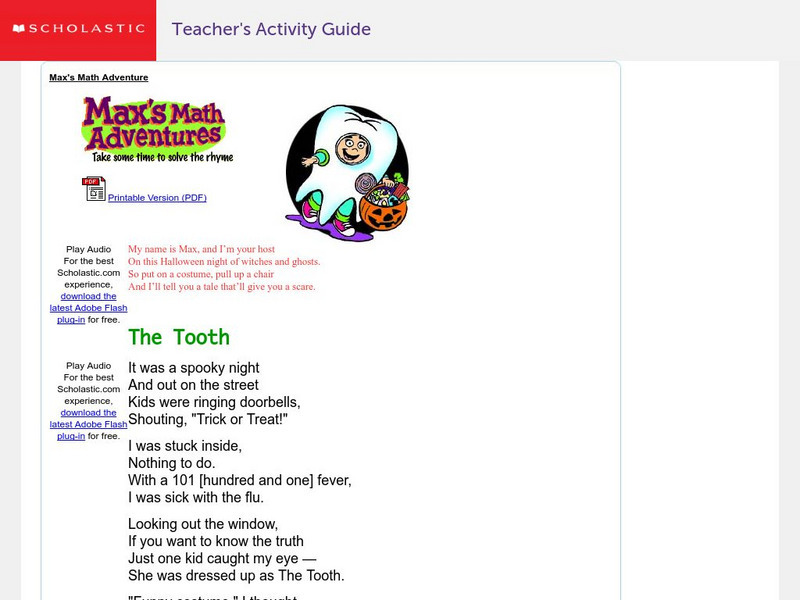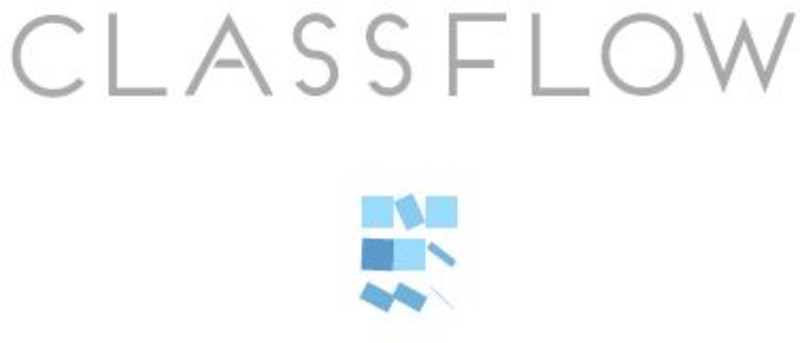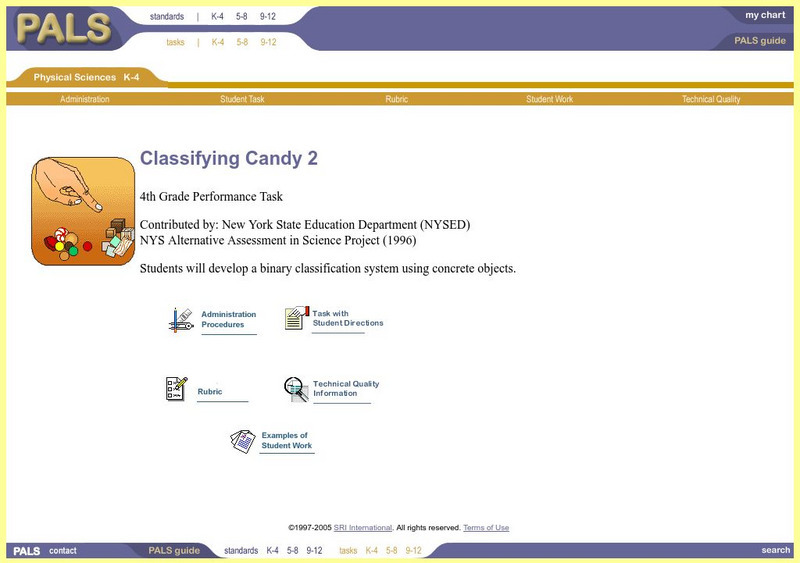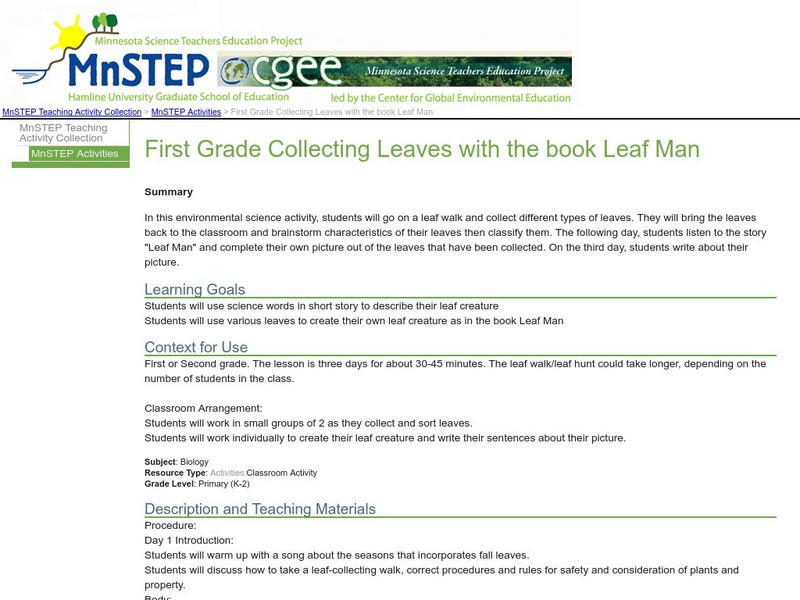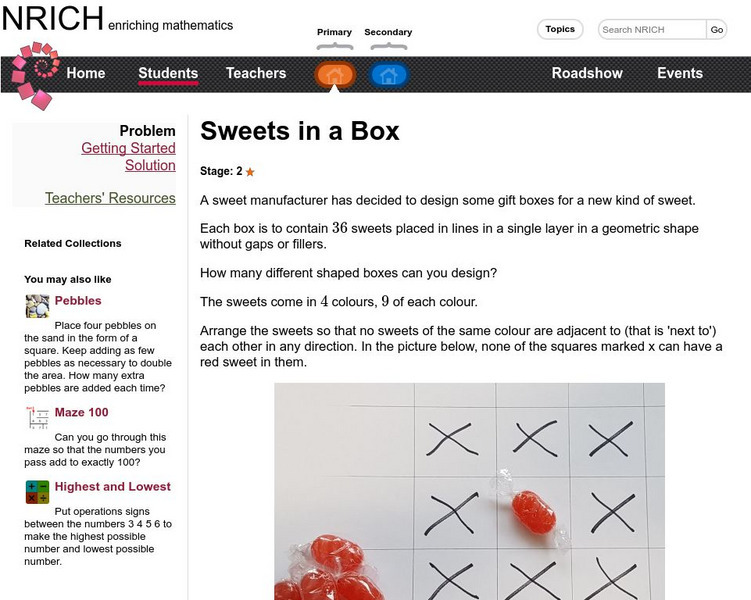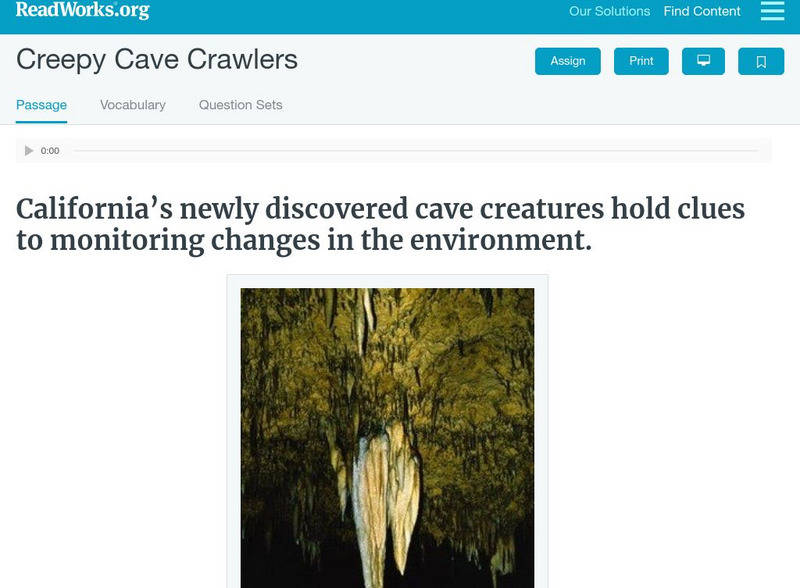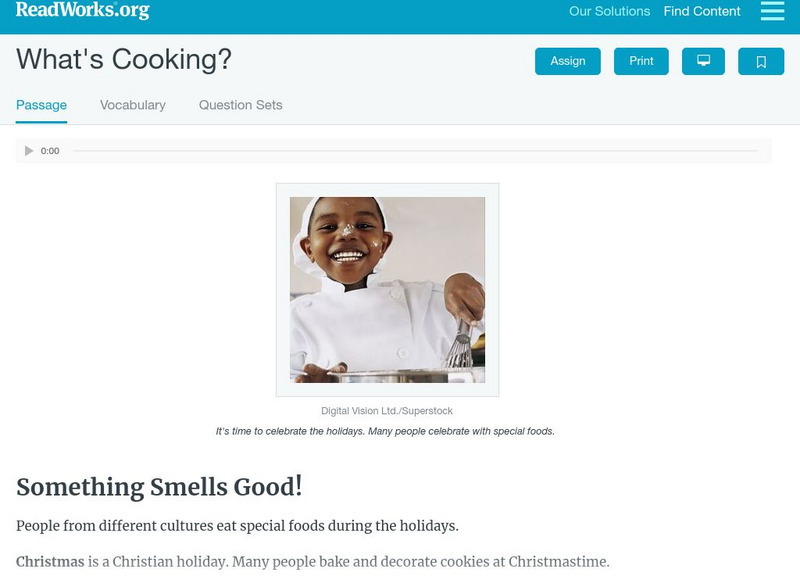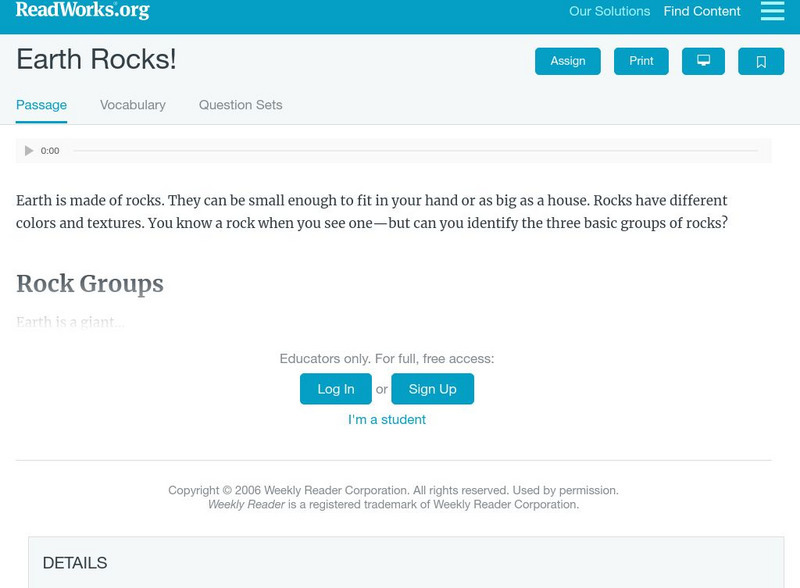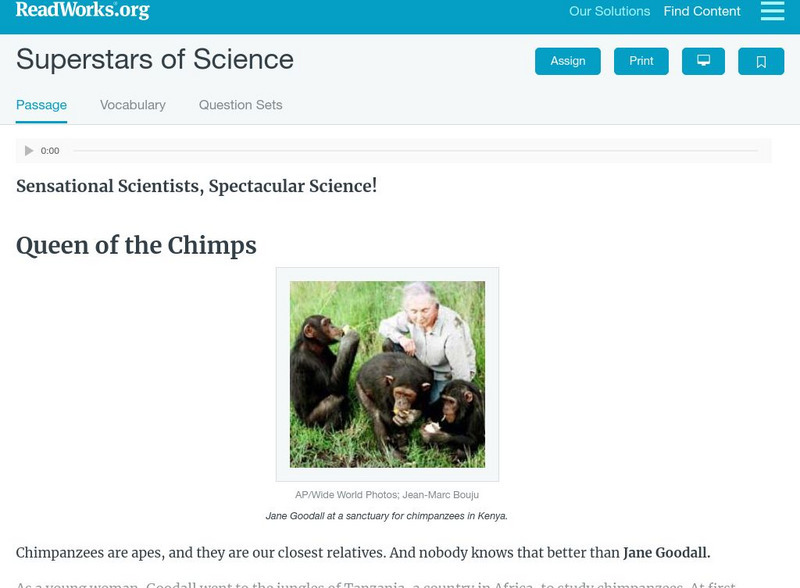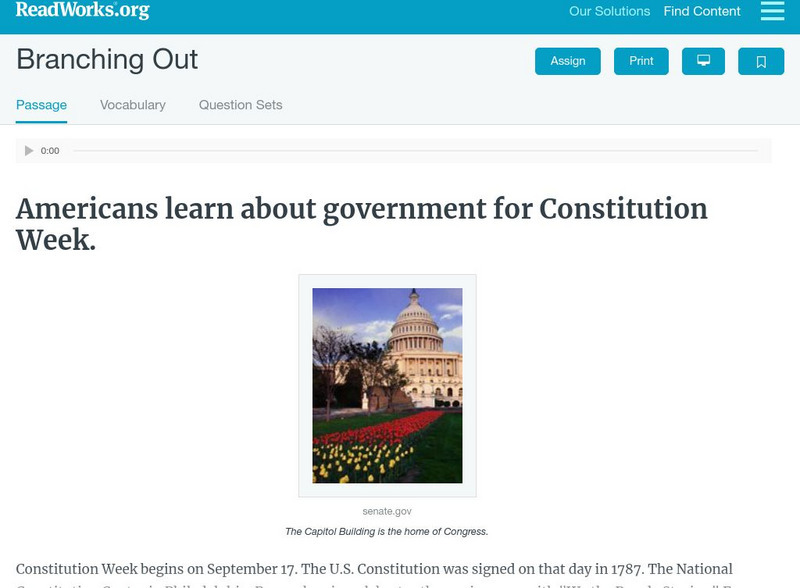The Franklin Institute
The Franklin Institute: Classified
At this site from The Franklin Institute you can practice classifying objects according to physical structure and characteristics.
PBS
Pbs Mathline Lesson: Geometry, It's a Perfect Fit [Pdf]
This two-part geometry lesson plan has young scholars identify, describe, and classify two-dimensional shapes. Students engage in hands-on activities including identifying shapes in the classroom, creating patterns with shapes,...
Scholastic
Scholastic: Max's Math Adventures: The Tooth
Read this spooky rhyme and then use the activity page to create patterns with Halloween candy. The teacher's guide and extra challenges will help teachers make fun and interesting lesson plans.
Utah Education Network
Uen: Cool Collectibles and Super Sorts
Second graders will create a classroom rock collection.
CK-12 Foundation
Ck 12: Arithmetic: Order of Real Numbers Grade 8
[Free Registration/Login may be required to access all resource tools.] Learn how to classify, order, and graph real numbers.
ClassFlow
Class Flow: Rational and Irrational Numbers
[Free Registration/Login Required] By the end of the lesson, students will classify numbers into number families to help understand how to distinguish the difference between rational and irrational numbers. Students will demonstrate this...
SRI International
Performance Assessment Links in Science: Classifying Candy 2 (Lesson)
For this fourth grade performance assessment task, students sort candies according to their properties and demonstrate their understanding of binary classification principles.
PBS
Pbs Teachers: Scientific American: Wild Places: Identifying Species
Sort and classify insects and spiders by characteristics, using stamps from the United States postal stamp Classic Collection. Create a taxonomic key to distinguish between any four animals.
ClassFlow
Class Flow: Two Sounds of G
[Free Registration/Login Required] This flipchart is correlated to Houghton Mifflin Grade 2 reading series. It reviews words with soft and hard g sounds, and includes a song, sound clips, interactive sorting, and classifying, spelling...
ClassFlow
Class Flow: Fact or Opinion
[Free Registration/Login Required] Students will be introduced to the difference between facts and opinions. They will practice determining which statements are facts and which are opinions. Activities include sorting and classifying...
CPALMS
Cpalms: Observable Properties of Matter
[Free Registration/Login Required] Students will sort objects according to their observable properties, such as size, shape, color, temperature (hot or cold), weight (heavy or light) and texture. Included are printable resources, a...
Indiana University
Indiana University Bloomington: Is It a Rock or Mineral? [Pdf]
In this lesson, students will compare types of candy to learn about geological classification. Students will classify and sort different materials by their composition and physical properties.
ClassFlow
Class Flow: Introduction to Graphing
[Free Registration/Login Required] In this flipchart students will be introduced to the process of sorting, classifying, and graphing procedures through an interactive series of three activities.
Science Education Resource Center at Carleton College
Serc: First Grade Collecting Leaves With the Book Leaf Man
In this environmental science activity, students go on a leaf walk and collect different types of leaves, and then brainstorm characteristics of their leaves then classify them.
Quia
Quia: Categories Battleship
In this interactive game, students try to sink the computer's battleships by naming the correct category for the words listed. There are three levels of play provided: Easy, Medium, and Hard.
Quia
Quia: Rags to Riches: Categories Ladder
In this interactive, millionaire-style game, students see groups of three or four items and select the category that fits each group.
University of Cambridge
University of Cambridge: Nrich: Sweets in a Box
Improve logic and pattern creation skills performing this game. Includes solution.
Quia
Quia: Rags to Riches: Category Ladder Iii
In this interactive, millionaire-style game, students see groups of three items and select the category that fits each group.
ABCya
Ab Cya: States of Matter
States of Matter is an educational activity for kids to learn about the different properties of matter. The lesson will introduce solids, liquids, and gases. Students will then be assessed through a sorting activity where they will...
Read Works
Read Works: Creepy Cave Crawlers
[Free Registration/Login Required] Students read about new insect species found within caves. A question sheet is available to help students build skills in classifying and categorizing.
Read Works
Read Works: What's Cooking
[Free Registration/Login Required] Students read about how different holidays are celebrated with different types of food. A question sheet is available to help students build skills in classifying and categorizing.
Read Works
Read Works: Earth Rocks
[Free Registration/Login Required] Students read about three different types of rocks: sedimentary, igneous, and metamorphic. A question sheet is available to help students build skills in classifying and categorizing.
Read Works
Read Works: Superstars of Science
[Free Registration/Login Required] Students read about scientists Jane Goodall, Stephen Hawking, Dean Kamen, Rachel Carson, and Charles Henry. A question sheet is available to help students build skills in classifying and categorizing.
Read Works
Read Works: Branching Out
[Free Registration/Login Required] Students read about three branches of government and their system of checks and balances. A question sheet is available to help students build skills in classifying and categorizing.

